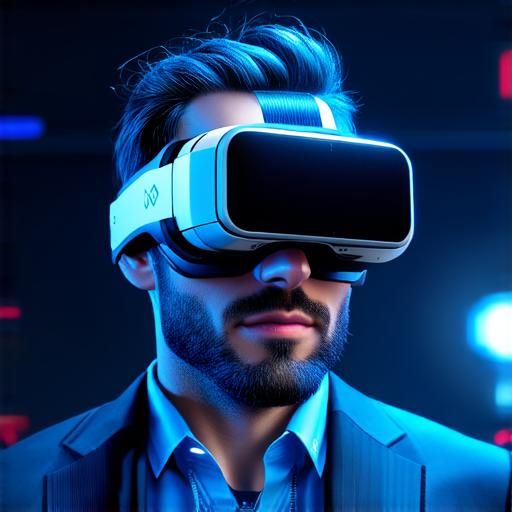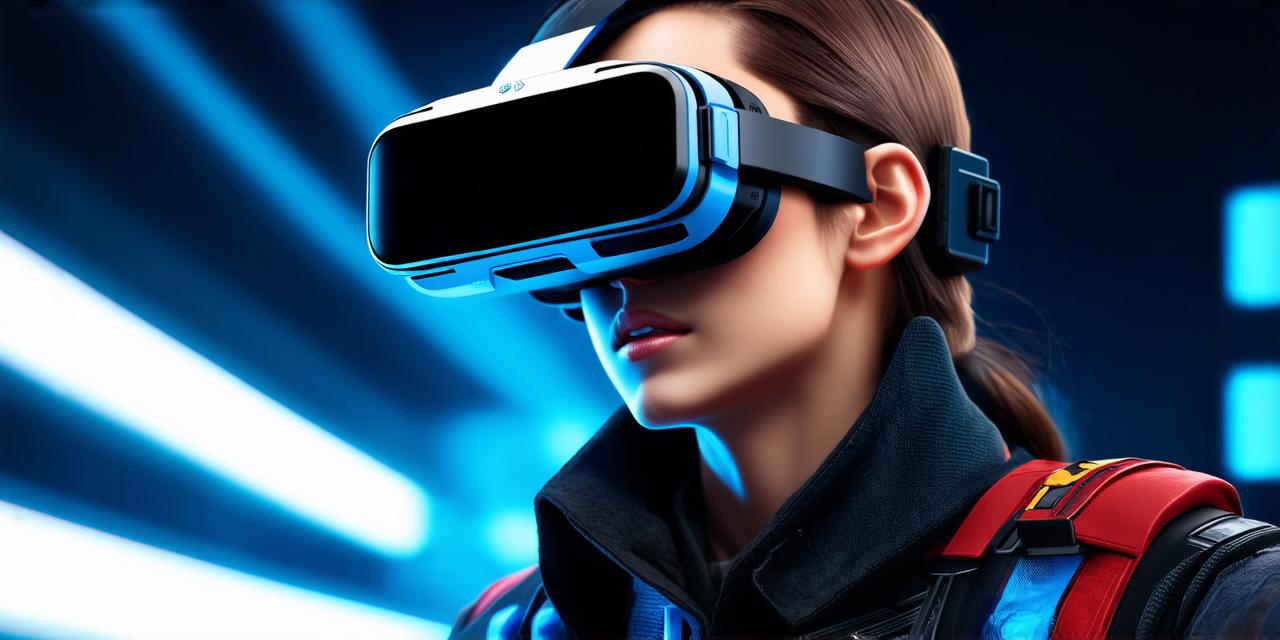<!DOCTYPE html>
Advancements in Display Technology
One of the biggest advancements in VR technology has been the development of high-resolution displays. These displays have significantly improved the visual quality of VR experiences, making them more immersive and realistic. For example, Oculus’ Rift S headset now features a resolution of 2160 x 2160 pixels per eye, which is twice as high as its predecessor, the Oculus Quest 2.
Another major development in display technology has been the creation of holographic displays. These displays use light to create three-dimensional images that can be viewed from any angle without the need for special glasses or headsets. One example of a holographic display is the HoloDeck, which was recently showcased at CES 2023. This technology has the potential to completely revolutionize VR experiences by allowing users to see objects in their virtual environment from any perspective and without limitations.
Improvements in Movement Tracking and Comfort
Another area where VR technology has made significant advancements is in movement tracking and comfort. With the advent of wireless controllers and advanced sensors, VR users can now move more freely and comfortably while wearing their headsets. This has led to a more immersive and realistic experience for users, as they can now move naturally within their virtual environment.
In addition, many VR headset manufacturers have made efforts to improve the comfort of their devices. For example, the Oculus Quest 2 features adjustable headbands and cushioned lenses to reduce pressure on the face and improve overall comfort during use. This has led to a more pleasant experience for users and has increased the amount of time they can spend in virtual reality.
Advancements in Haptic Feedback
Haptic feedback technology has also made significant strides in recent years, allowing VR users to feel more immersed in their virtual environment. This technology uses sensors and motors to simulate physical sensations such as vibration, tension, and pressure.

One example of haptic feedback in VR is the HaptX gloves, which use advanced sensors and motors to provide a realistic tactile experience for users. These gloves can be used in a variety of applications, from gaming to surgical training. By providing users with a sense of touch within their virtual environment, haptic feedback technology has the potential to make VR experiences more engaging and immersive.
Advancements in AI and Machine Learning
Artificial intelligence (AI) and machine learning have also played a significant role in the advancement of VR technology. These technologies are being used to create more realistic and dynamic virtual environments that can adapt to user behavior and preferences.
For example, some VR games now use AI algorithms to adjust the difficulty level based on the player’s performance, providing a more challenging and engaging experience. In addition, AI is also being used to improve the accuracy of movement tracking in VR, allowing users to move more naturally and fluidly within their virtual environment.
The Future of VR Technology
As VR technology continues to evolve, it’s important for developers to stay up-to-date with the latest advancements to create experiences that are both immersive and engaging. In the coming years, we can expect to see even more advancements in display technology, movement tracking, comfort, haptic feedback, and AI.
One area where VR technology is likely to make a significant impact is in healthcare. Virtual reality simulations can be used for surgical training, physical therapy, and mental health treatments, providing patients with a safe and controlled environment to practice new skills or work through emotional issues. For example, the use of VR in surgery has been shown to improve accuracy and reduce blood loss, making it a safer option for patients.
Another area where VR technology is likely to have a significant impact is in education. By providing students with a more immersive and engaging learning experience, VR technology has the potential to increase retention rates and improve overall academic performance. This can be particularly useful in subjects such as science and history, where visual representation of concepts can greatly enhance understanding.
Conclusion
In conclusion, the latest advancements in VR technology are bringing us one step closer to truly immersive and realistic virtual environments. As a VR developer, it’s important to stay up-to-date with these developments to create experiences that are both engaging and impactful. With continued innovation in display technology, movement tracking, comfort, haptic feedback, and AI, VR is poised to revolutionize the way we interact with digital environments and improve our lives in a variety of ways.
